#HDPE products
Explore tagged Tumblr posts
Text
HDPE Plastic and FR4 Composite: Essential Materials for Modern Industry
GRM Custom Products is dedicated to delivering innovative, high-quality materials that meet the evolving needs of various industries. Among our product offerings, HDPE plastic and FR4 composite stand out as essential materials used across many applications. In this blog, we explore the unique properties, benefits, and common uses of these two versatile materials, helping you better understand why they are indispensable in modern manufacturing and design.
Understanding HDPE Plastic
High-Density Polyethylene (HDPE) is a widely-used thermoplastic known for its durability, strength, and resistance to impact and moisture. Here’s why HDPE is a material of choice in many sectors:

Key Properties of HDPE Plastic
High Strength-to-Weight Ratio: HDPE is lightweight yet extremely durable, which makes it easy to transport and ideal for applications that require high tensile strength.
Chemical and Moisture Resistance: This material is highly resistant to chemicals and water, allowing it to endure harsh environmental conditions without degrading.
Impact Resistance: HDPE can absorb impact without cracking or breaking, making it ideal for demanding applications such as protective equipment or industrial components.
Ease of Fabrication: HDPE is easy to machine and shape, providing flexibility for custom designs and complex manufacturing needs.
Common Applications of HDPE Plastic
At GRM Custom Products, we often recommend HDPE plastic for applications where durability and adaptability are paramount. Common uses include:
Industrial Containers: HDPE’s resistance to chemicals makes it ideal for manufacturing chemical containers and storage tanks.
Pipe Systems: Its durability and moisture resistance make HDPE an excellent choice for piping and water transportation systems.
Construction Components: HDPE plastic is often used in geomembranes, flooring, and other construction materials due to its high impact resistance and weather resilience.
Packaging: Lightweight yet durable, HDPE is a popular choice for packaging, especially for food and beverage containers.
Exploring FR4 Composite
FR4 composite is a versatile, flame-resistant material predominantly used in the electronics industry. Made from a fiberglass-reinforced epoxy laminate, FR4 is known for its strength, lightweight properties, and excellent electrical insulation capabilities.
Key Properties of FR4 Composite
High Dielectric Strength: FR4 offers excellent electrical insulation, making it ideal for applications requiring high voltage resistance.
Flame Resistance: The flame-retardant properties of FR4 composite help ensure safety, especially in high-temperature environments.
Mechanical Strength: FR4 is rigid, durable, and resistant to bending, allowing it to maintain structural integrity under various conditions.
Low Moisture Absorption: This material resists moisture absorption, which helps maintain its properties even in humid or wet conditions.
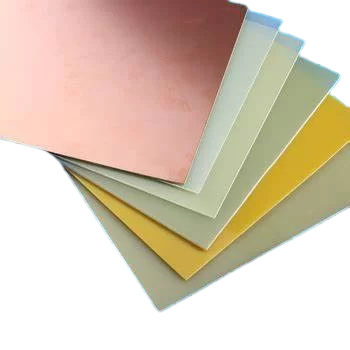
Common Applications of FR4 Composite
FR4 is a critical component in the electronics and electrical industries. At GRM Custom Products, we see strong demand for FR4 composite in:
Printed Circuit Boards (PCBs): FR4 is the primary material for PCBs due to its excellent insulation and mechanical properties.
Insulation Panels: The flame resistance and dielectric properties of FR4 make it a safe choice for insulation in high-voltage electrical panels.
Aerospace Components: FR4 composite is used in aerospace applications where lightweight, high-strength, and fire-resistant materials are necessary.
Test Fixtures and Jigs: The stability and resilience of FR4 make it ideal for custom manufacturing jigs, where reliable performance is essential.
HDPE Plastic vs. FR4 Composite: Which is Right for Your Application?
While both HDPE plastic and FR4 composite offer outstanding durability and resistance to environmental factors, they serve distinct purposes based on industry needs. HDPE plastic is often preferred for projects requiring chemical resistance, impact strength, and cost-effectiveness. Its versatility makes it suitable for industrial containers, piping, and construction. FR4 composite, on the other hand, is designed for high-performance applications, especially in the electronics and electrical sectors. Its flame resistance, electrical insulation, and rigidity make it the material of choice for circuit boards, insulation, and aerospace components.
Why Choose GRM Custom Products?
At GRM Custom Products, we pride ourselves on providing top-quality materials tailored to your specific industry needs. We offer custom solutions in HDPE plastic and FR4 composite, ensuring that you receive products that meet rigorous standards for safety, durability, and performance. Our team of experts works closely with clients to recommend the best material for each application, delivering solutions that help drive innovation and efficiency in your operations.
Conclusion
If you’re looking for reliable, high-performance materials like HDPE plastic or FR4 composite, GRM Custom Products is here to help. Our extensive inventory, customized solutions, and commitment to quality make us the ideal partner for all your material needs. Contact us today to discuss your project
1 note
·
View note
Text


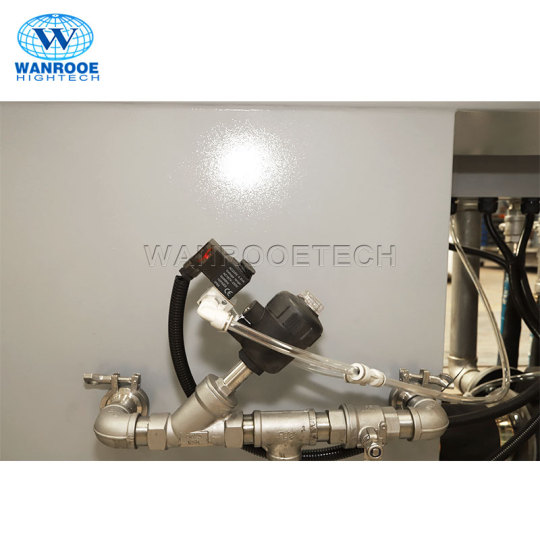
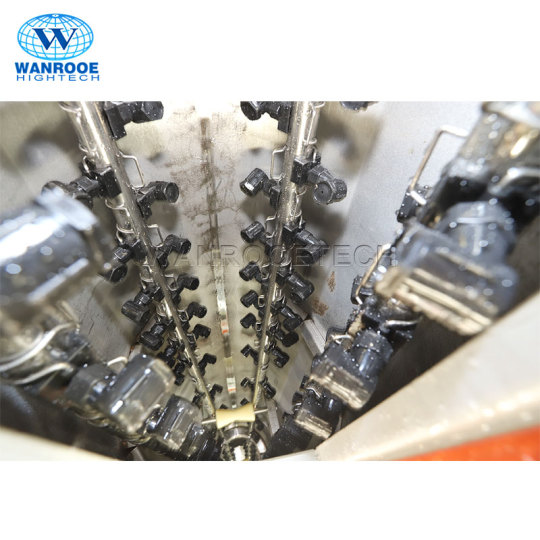

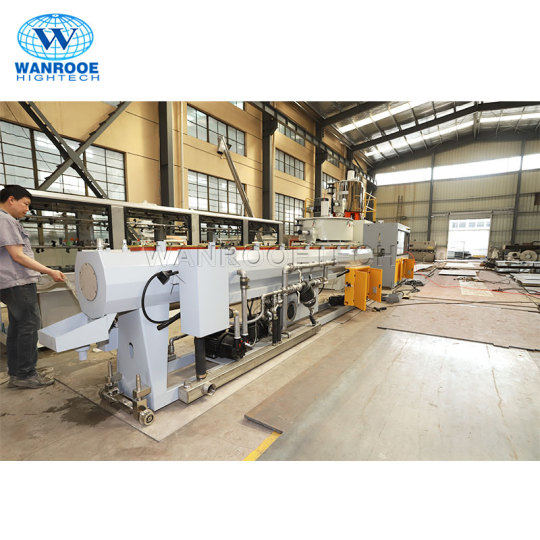

Vacuum calibrating bench barrels being made of stainless steel. It divided into two sections, front and back end is vacuum cooling and spray cooling. Stainless steel ball float water level regulation, the structure is simple and practical. Nozzle materials for ABS engineering plastics. Rack 3 d adjustable, before and after the mobile adopts cycloidal reducer drive, up and down and around adopts screw pair of regulation. Barrel body with wheel mechanism; Which can effectively prevent sagging phenomenon.
0 notes
Text
Unleashing Creativity: How HDPE Plastic Sheets Are Inspiring Design Innovation
In today's rapidly evolving design landscape, creativity is the driving force behind innovation. The ability to think outside the box, coupled with access to versatile materials, has led to groundbreaking advancements across various industries. One such material that has been at the forefront of this creative revolution is HDPE (High-Density Polyethylene) plastic sheets. These sheets, known for their durability, flexibility, and sustainability, have become the canvas upon which designers and engineers are creating masterpieces. This article delves into the transformative role of HDPE plastic sheets in inspiring design innovation.
The Rise of HDPE Plastic Sheets
HDPE plastic sheets have gained immense popularity in recent years, thanks to their unique properties. As a thermoplastic made from petroleum, HDPE offers excellent strength-to-density ratio, making it ideal for a wide range of applications. Whether it's in construction, packaging, or manufacturing, HDPE has proven to be a reliable and cost-effective material.
In India, the demand for HDPE products has been steadily rising, leading to the emergence of numerous suppliers and exporters. Among them, HDPE plastic sheets exporters in Gujarat and HDPE polythene sheet suppliers in India have played a pivotal role in meeting the growing demand. These suppliers offer high-quality HDPE sheets that adhere to international standards, ensuring durability and performance.
Design Innovation with HDPE Plastic Sheets
The versatility of HDPE plastic sheets has unlocked a world of possibilities for designers and engineers. From architectural marvels to innovative packaging solutions, HDPE has been instrumental in pushing the boundaries of design. Its ability to be molded into various shapes and sizes makes it a preferred choice for complex projects.
In Ahmedabad, a city known for its vibrant design community, HDPE products exporters in Ahmedabad have been actively promoting the use of HDPE sheets in creative ventures. By providing designers with access to high-quality materials, these exporters have catalyzed a wave of design innovation across the region.
Sustainability and Environmental Impact
In an era where sustainability is paramount, HDPE plastic sheets have emerged as an eco-friendly alternative to traditional materials. Unlike other plastics, HDPE is recyclable and can be repurposed multiple times without losing its integrity. This makes it a preferred choice for environmentally conscious designers and businesses.
By opting for HDPE sheets, designers can reduce their carbon footprint and contribute to a greener future. Moreover, the durability of HDPE ensures longevity, reducing the need for frequent replacements and minimizing waste.
Conclusion
HDPE plastic sheets have revolutionized the way designers approach creativity and innovation. Their versatility, durability, and sustainability have made them a preferred choice for various applications across industries. With the support of reliable suppliers and exporters, such as HDPE plastic sheets exporters in Gujarat and HDPE polythene sheet suppliers in India, the future looks promising for design innovation fueled by HDPE. As we continue to explore the endless possibilities offered by this remarkable material, one thing is certain – the creative potential of HDPE plastic sheets is limitless.
Frequently Asked Questions
What are HDPE plastic sheets? HDPE (High-Density Polyethylene) plastic sheets are thermoplastic sheets made from petroleum. They are known for their high strength-to-density ratio, durability, and flexibility, making them suitable for various applications.
Where can I find reliable HDPE plastic sheets suppliers in India? In India, there are several reputable suppliers and exporters of HDPE plastic sheets. HDPE plastic sheets exporters in Gujarat and HDPE polythene sheet suppliers in India are among the leading providers of high-quality HDPE products.
How are HDPE plastic sheets contributing to design innovation? HDPE plastic sheets offer versatility and flexibility, allowing designers to experiment with various shapes, sizes, and applications. Their durability and sustainability also make them a preferred choice for eco-friendly design solutions.
Are HDPE plastic sheets environmentally friendly? Yes, HDPE plastic sheets are considered environmentally friendly due to their recyclable nature and long lifespan. They contribute to reducing waste and promoting sustainability in design and manufacturing processes.
#hdpe plastic sheets exporters in Gujarat#hdpe polythene sheet suppliers in India#hdpe products exporters in Ahmedabad
0 notes
Text
#Why HDPE Bottles Are the Better Choice for Your Products#If you're in the business of selling products#you know how important it is to have high-quality packaging that not only protects your products but also showcases them in the best possib#strength#and versatility#making them the ideal choice for a wide range of products.#Connect with us to know more!#Contact us : : 91 9393921888#Mail us : : [email protected]#Visit : : https://www.plasticcontainers.co.in/best-hdpe-bottle-suppliers-in-hyderabad-india/#hdpebottlemanufacturersinindia#besthdpebottlesuppliersinhyderabad#hdpebottlemanufacturers#hdpebottlesuppliers#hdpebottlesuppliersindia#agroindustry#automobileindustry#chemicalindustry#cosmeticsindustry#foodindustry#petbottles#generalpurpose#pharmaceuticalindustry#specialpurpose#plasticbottles#plasticjars#petjars#plasticcontainers#saraswatiplasticindustries#HDPEChemicalBottles
0 notes
Text
For the record, while I like making money, the reason I'm doing this is NOT money.
During the summer, our parks get absolutely TRASHED from people playing sports out in the fields, even though we put trash cans out there for their convenience. Number 1 litter is plastic bottles and we have to clean some spots twice a day because of how much is left on the field. Sometimes I find them in the creek, sometimes in birds nests.
If something annoys me, I turn it into a game because it prevents me from being resentful of the job. And access to that area means I get a lot of interesting colors that I wouldn't get normally (I don't drink diet coke, so I would never get the silver caps.)
I learned that HDPE (bottle caps) and LDPE (milk cartons) can be melted down and reformed pretty much infinitely using household heating elements, and that they're not dangerous to work with in well ventilated areas. They only shed microplastics when exposed to ultraviolet, so getting them out of the sun is good.
It's very cool to me to make something out of trash. It helps that it's plentiful, part of my job, free, and easily done. That it helps the environment, even a little, is very cool.
I like seeing how the plastics interact with each other. I like seeing how they melt. I like the cool marbling effect when you throw some LDPE in with the colored caps.
What are the applications? How is this useful? How can I sell this? What is the end goal? What is the product?
Inconsequential. Mad science is happening in your garage.
327 notes
·
View notes
Text

Polyethylene Recycling
Polyethylene - either in the form of high density polyethylene (HDPE), low density polyethylene (LDPE), or another - is considered to be the mostly widely used plastic in the world. It is used to make plastic bags, food containers, cutting boards, etc. However, rates of plastic recycling as a whole are considered relatively low compared to other materials like paper or some metals and polyethylene is no exception to this. This is partially because most plastics, polyethylene included, cannot be infinitely recycled in the way of most metals. Recycling of polyethylene typically results in a decrease in strength of the resulting product, especially after repeated recycling.
Sources/Further Reading: (Image source - 2023 article) (AZO) (Beyond Plastics) (Wikipedia)
27 notes
·
View notes
Text
A Concise Guide to Resin Identification Codes for Plastic Recycling
This is a gentle reminder that World Environment Day will be 2 days from now. The theme for 2025 is: "Beat Plastic Pollution"! RICs are those little 3Rs symbols on the bottom of bottles with a number inside. They correlate to the kind of plastic the material is made of and is extremely vital in the recycling process. There are even RICs made for glass! Below's a brief introduction to the seven types of plastic RICs and how they're usually recycled in households.
RIC 1: Polyethylene Terephthalate (PET) PET, used in beverage bottles and food jars, is clear, lightweight, and widely recycled. Its strengths include clarity and shatter resistance, but it’s heat-sensitive and prone to scratching. Most curbside programs accept PET after rinsing and cap removal. It’s recycled into polyester fiber for textiles or reused as planters and organizers, with high demand in the textile industry.
RIC 2: High-Density Polyethylene (HDPE)HDPE, found in milk jugs and detergent bottles, is durable and chemically resistant but opaque and UV-sensitive. Widely accepted in curbside recycling, it’s processed into new bottles or plastic lumber. HDPE containers can be reused for storage or planters, and the construction industry values it for non-structural applications like pipes and furniture.
RIC 3: Polyvinyl Chloride (PVC)PVC, used in food films and vinyl flooring, is durable and versatile but poses environmental risks due to toxic chlorine gas when burned and recycling challenges. Most curbside programs reject PVC, though specialized facilities recycle vinyl siding. Rigid PVC can be reused for storage or planters, but avoid food or heat applications.
RIC 4: Low-Density Polyethylene (LDPE)LDPE, common in plastic bags and squeeze bottles, is flexible and moisture-resistant but has low heat tolerance. Curbside programs rarely accept LDPE, but grocery stores collect bags for recycling into composite lumber. LDPE bags can be reused for storage or liners, with demand in the shipping industry for packaging.
RIC 5: Polypropylene (PP)PP, used in yogurt containers and bottle caps, is heat-resistant and lightweight but UV-sensitive. Many recycling programs accept PP after cleaning, turning it into automotive parts or fibers. PP containers are ideal for food storage or crafts, with growing demand in automotive and textile industries.
RIC 6: Polystyrene (PS) Polystyrene is found in disposable cutlery and Styrofoam. It is lightweight and insulating but brittle and toxic when burned. Most curbside programs don’t accept PS due to recycling difficulties. Limited reuse includes storage for rigid PS, while some packaging companies and art schools take clean foam for reprocessing or projects.
RIC 7: Other Plastics RIC 7 includes diverse plastics like polycarbonate and nylon, used in water bottles and electronics housings. Properties vary, but recycling is limited due to inconsistent compositions. Reuse depends on the plastic type, like storage for polycarbonate, while electronics recyclers may accept specific components, though options are scarce.
#world environment day#environment#BeatPlasticPollution#plastic#plastic recycling#reduce reuse recycle
4 notes
·
View notes
Text
Understanding Recycling Codes: What Can Be Recycled?
Recycling is more than just a buzzword; it’s a lifestyle choice that can significantly impact our environment. But how do we know what to recycle? The answer lies in understanding recycling codes. Each code, usually found at the bottom of plastic items, signifies the type of material and its recyclability. In this comprehensive guide, we will explore the different recycling codes, what can be recycled, and the importance of proper waste management.
Understanding Recycling Codes: What Can Be Recycled?
Recycling codes are numerical identifiers assigned to products made from various types of plastic. These codes provide crucial information about how to handle materials once they’ve reached the end of their useful life. The numbers range from 1 to 7 and indicate different resin types, each with unique properties and recycling processes.
The Importance of Recycling
In an age where waste is accumulating at an alarming rate, recycling serves as a beacon of hope. It helps conserve natural resources, reduces landfill waste, and decreases greenhouse gas emissions. Through effective junk removal strategies and education on hauling services, we can all contribute to a cleaner planet.
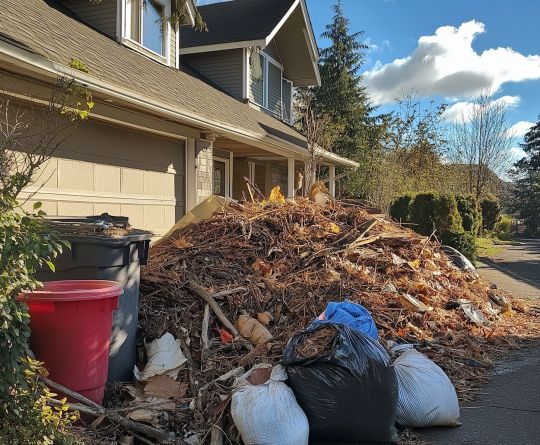
The Seven Recycling Codes Explained 1: PET or PETE (Polyethylene Terephthalate)
Commonly found in drink bottles and food containers, PET is one of the most widely recycled plastics. It’s lightweight yet strong, making it ideal for packaging.
Recyclability: Yes Uses of Recycled Material: New containers, clothing fibers 2: HDPE (High-Density Polyethylene)
This type is often used for milk jugs, detergent bottles, and some plastic bags due to its durability.
youtube
Recyclability: Yes Uses of Recycled Material: Pipes, plastic lumber 3: PVC (Polyvinyl Chloride)
PVC is commonly seen in pipes and vinyl siding but isn’t typically accepted in curbside recycling programs.

Recyclability: Limited Uses of Recycled Material: Flooring tiles, new pipes 4: LDPE (Low-Density Polyethylene)
Often used for shopping bags and some food wraps, LDPE isn’t widely accepted in curbside pickup but can be recycled through specific programs.
Recyclability: Limited Uses of Recycled Material: Floor tiles, shipping envelopes 5: PP (Polypropylene) junk removal Rapid Haul Away LLC
Used in yogurt containers and straws, polypropylene has a higher melting point compared to others.
Recyclability: Yes Uses of Recycled Material: Brooms, bins 6: PS (Polystyrene)
Commonly known as Styrofoam, polystyrene is not recyclable in many areas due to its lightweight nature.
youtube

Recyclability: No Alternative Disposal Methods: Junk pickup services for large quantities 7: Other (Various Plastics)
This category includes various plastics that don’t fit into the other six categories. Their recyclability varies widely based on local regulations.
2 notes
·
View notes
Text
Electrical Conduit Pipe Market Analysis By Segmentations, Top Key Players, Geographical Expansion, Future Development & Forecast 2034
Fact.MR, in its latest research report released recently, states that the worldwide electrical conduit pipe market stands at US$ 34,302.4 million in 2024, and is anticipated to grow at a 4.8% CAGR to reach a market value of US$ 54,819.8 million by the end of 2034. Market Research Report.
The size of the electrical conduit pipe market is likely to witness growth opportunities in emerging markets due to the development of e-commerce, which has greatly revolutionized the operations of businesses, including those involved in the production and supply of building and construction materials, like electrical conduit pipes. Growing online buying and widespread adoption of e-commerce platforms provide new opportunities and benefits for electrical conduit pipe manufacturers.
For More Insights into the Market, Request a Sample of this Report: https://www.factmr.com/connectus/sample?flag=S&rep_id=9412
Country-wise Insights
Fact.MR, a competitive intelligence and market research solutions provider, affirms in its recently released research report that by 2034, North America is estimated to have a 29.9% share in the global market. Ongoing and future residential and commercial buildings projects drive substantially the demand for electrical conduit pipes.
The United States is also expected to control 64.1% of the North American market in 2034. Government policies and higher investments in infrastructure development, such as residential, commercial, and industrial buildings, can fuel the demand for electrical conduit pipes. The establishment of smart cities and the use of IoT devices in urban infrastructure can cause higher demand for conduit systems to accommodate and safeguard the required wiring.
China is predicted to have a 59.5% market revenue share in the East Asia market by the year 2034. Expansion of the manufacturing industry in China, particularly in the production of electronics and electrical equipment, can fuel the need for conduit systems in industrial environments.
Category-wise Insights
On the basis of application, worldwide demand for electrical conduit pipe is expected to grow substantially in the IT and Telecommunication segment. The IT and telecommunication industry undergoes quick technological improvements and regular upgrading. Conduit systems enable one to be adaptable to evolving technologies by offering a modular and adjustable infrastructure for cabling installations.
The IT and Telecommunication portion of electrical conduit pipe is expected to maintain a market share of 52.5% by 2034. Electrical conduit pipes create a safe and neat route for installation and safeguarding data cables, fiber optic cables, and other communication wiring, which is most important in IT and telecommunication infrastructure where the protection and management of cables take precedence.
Conduit systems prevent electromagnetic interference, which is crucial for ensuring the reliability and integrity of data transmission in IT and telecommunication networks, particularly for preserving signal quality and preventing data loss or corruption.
Competitive Landscape
Key players within the electrical conduit pipe industry are adopting a variety of strategies in order to achieve their goals. The strategies include promoting innovation, embracing stringent quality control across their product ranges, forming strategic alliances, streamlining supply chain management systems, and constantly improving both their products and technologies.
Recent Development
In 2022, Atkore International Group Inc. acquired Elite Polymer Solutions, a leading High-Density Polyethylene tubing conduit manufacturer, successfully. Elite Polymer Solutions serves the telecom, utility, and transportation industries. The strategic purchase increases Atkore's portfolio of HDPE pipe products and expands its geography, allowing the company to capitalize on the increasing demand for underground protection in the electrical, utility, and telecommunications markets.
Wienerberger AG, Aliaxis Group S.A., Sekisui Chemical Co., Ltd., Atkore International Group Inc., China Lesso Group Holdings Ltd., Nan Ya Plastics Corp., Zekelman Industries Inc., Orbia Advance Corporation, OPW Corporation, are major players in the market.
Browse Full Report: https://www.factmr.com/report/electrical-conduit-pipe-market
Segmentation of Electrical Conduit Pipe Market Research
By Application :
Electrical Wire Cables
IT and Telecommunication
By Type :
Rigid Conduit Pipe
Flexible Conduit Pipe
By Region :
North America
Europe
East Asia
Latin America
Middle East & Africa
South Asia & Oceania
𝐂𝐨𝐧𝐭𝐚𝐜𝐭:
US Sales Office 11140 Rockville Pike Suite 400 Rockville, MD 20852 United States Tel: +1 (628) 251-1583, +353-1-4434-232 Email: [email protected]
1 note
·
View note
Text
HDPE Packaging Market Growth, Key Players, & Industry Insights 2025
Comprehensive Analysis of the Global HDPE Packaging Market
Executive Summary
The global HDPE Packaging Markethas demonstrated substantial growth, valued at USD 17.10 billion in 2022 and projected to reach USD 17.96 billion in 2023. The market's continued expansion is expected to see it reach USD 26.25 billion by 2031, with a compound annual growth rate (CAGR) of 5.57% during the forecast period from 2024 to 2031. This growth trajectory is attributed to the increasing demand for durable, lightweight, and recyclable packaging solutions across diverse industries such as food and beverages, pharmaceuticals, personal care, and e-commerce. Additionally, the rise of eco-conscious consumer behavior and sustainability trends are likely to significantly influence the market's evolution in the coming years.
This article explores the intricate dynamics of the HDPE packaging market, including growth drivers, challenges, regional trends, and market segment analysis, with a focus on key insights that are shaping the sector's future.
Request Sample Report PDF (including TOC, Graphs & Tables): https://www.statsandresearch.com/request-sample/40611-global-hdpe-packaging-market
HDPE Packaging Market Overview
The global HDPE packaging market is witnessing robust growth, driven by technological advancements, increasing demand for sustainable solutions, and a shift toward more efficient packaging alternatives. As industries across the world look to optimize their packaging systems, HDPE offers several compelling advantages—lightweight, durable, resistant to chemicals, and recyclable. These attributes make it highly favored for a wide range of packaging applications, particularly in industries where product safety and durability are paramount, such as food and beverage, healthcare, and consumer goods.
The market's expansion is further propelled by innovations in HDPE production technologies, including blow molding, extrusion processes, and the increasing shift toward post-consumer recycled (PCR) content. Moreover, the regulatory landscape is evolving to favor recyclable and sustainable materials, which positions HDPE as a preferred choice for manufacturers looking to comply with stringent environmental regulations.
Get up to 30% Discount: https://www.statsandresearch.com/check-discount/40611-global-hdpe-packaging-market
Key HDPE Packaging Market Drivers:
Sustainability Trends: Increasing consumer preference for eco-friendly packaging options.
Advancements in Manufacturing: Technological innovations leading to more efficient and cost-effective production of HDPE packaging.
E-commerce Growth: The rising demand for packaging solutions due to the exponential growth of the e-commerce industry.
Regulatory Pressure: Government initiatives and policies promoting the adoption of recyclable and reusable packaging solutions.
HDPE Packaging Market Dynamics
Drivers of Market Growth
Durability and Lightweight Nature HDPE’s inherent strength and low weight make it an ideal material for packaging, especially for liquid and solid products that require long shelf lives or need protection from external factors like moisture and contaminants. Its resilience ensures that it remains one of the most sought-after materials for both primary and secondary packaging in various sectors.
Rising Demand for Sustainable Packaging Solutions A significant shift toward sustainable packaging solutions is reshaping the industry. With heightened concerns over plastic pollution and environmental impact, manufacturers are increasingly turning to recyclable HDPE alternatives. This trend is particularly prevalent in consumer goods, food and beverage, and pharmaceuticals, where eco-friendly packaging is now a key demand driver.
Technological Advancements Breakthroughs in HDPE production technologies—such as advancements in blow molding, extrusion, and thermoforming—have improved the material’s versatility, strength, and customization options. These innovations enable manufacturers to create lightweight, high-performance packaging that meets consumer expectations for both functionality and sustainability.
Regulatory Push for Recyclable Packaging Governments around the world are enacting stricter regulations on plastic waste and non-recyclable packaging. As part of the global initiative to combat plastic pollution, many jurisdictions are mandating the use of recyclable materials in packaging. HDPE's ability to be easily recycled makes it a highly attractive material for companies striving to comply with these policies.
HDPE Packaging Market Challenges
Fluctuating Raw Material Prices One of the significant challenges impacting the HDPE packaging market is the volatility in raw material prices. The price of crude oil, which is a key input in HDPE production, can be unstable, which in turn affects the cost of HDPE-based packaging solutions.
Plastic Waste Management Concerns Despite being recyclable, HDPE is still plastic, and its widespread use has contributed to mounting concerns about plastic waste. Many companies in the packaging sector are under pressure to adopt sustainable alternatives, and there is an ongoing push for innovations in biodegradable blends and circular economy initiatives.
HDPE Packaging Market Segmental Analysis
By Product Type
Bottles & Containers
The bottles and containers segment dominated the global HDPE packaging market in 2023 and is expected to maintain its leading position through 2031. HDPE bottles and containers are used extensively in the food and beverage, pharmaceutical, and household chemicals industries, where strength, moisture resistance, and durability are crucial. The growing demand for dairy products, juices, edible oils, and cleaning agents is expected to continue to drive growth in this segment.
The segment's projected CAGR from 2024 to 2031 is 5.2% as manufacturers increasingly incorporate post-consumer recycled (PCR) materials into bottle production to meet sustainability targets.
Films & Sheets
The films and sheets segment is gaining significant traction in packaging applications, especially in flexible packaging formats. HDPE films are lightweight, cost-effective, and capable of providing an excellent moisture barrier. This makes them highly suitable for applications in the food industry, such as packaging for fresh produce, meat, and dairy products. Additionally, the growing demand for e-commerce packaging, where flexible packaging is often preferred due to its efficiency, is driving the expansion of this segment.
By Material
Virgin HDPE
The virgin HDPE segment has historically commanded the largest share of the market due to its superior mechanical properties, such as higher strength, rigidity, and purity. These attributes make it particularly valuable in food and pharmaceutical packaging, where material safety is paramount. Despite the growing trend toward sustainable packaging, the reliability and performance of virgin HDPE continue to make it the material of choice in various applications.
Recycled HDPE
With increased environmental awareness and regulatory pressure, recycled HDPE is expected to experience robust growth. The transition toward using recycled content in HDPE packaging is driven by both consumer demand for sustainable packaging and the adoption of circular economy principles by companies in the packaging sector.
By End-Use Industry
Food & Beverage
The food and beverage sector remains the largest end-use industry for HDPE packaging, driven by the need for safe, durable, and lightweight packaging for perishable goods. The market for HDPE packaging in this sector is expected to grow at a CAGR of 5.5% from 2024 to 2031, bolstered by the increasing demand for convenient packaging formats such as bottles, containers, and pouches.
Pharmaceuticals & Healthcare
The pharmaceutical sector is another significant contributor to HDPE packaging demand. The need for tamper-evident, contamination-free packaging for medicines, supplements, and medical devices positions HDPE as a preferred material due to its high barrier properties.
HDPE Packaging Market Regional Analysis
Asia-Pacific
The Asia-Pacific region is poised for the highest growth rate in the global HDPE packaging market, with a projected CAGR of 5.8%. The growth is largely driven by the rapid industrialization and urbanization in countries like China and India, where there is increasing demand for HDPE packaging solutions in the food, beverage, and pharmaceutical sectors. The rise in disposable incomes and the booming e-commerce industry are further contributing to this growth.
North America & Europe
In North America and Europe, the demand for HDPE packaging is being fueled by stringent environmental regulations and a growing emphasis on sustainable packaging solutions. Both regions are expected to experience steady growth rates, with North America projected to grow at 5.2% CAGR and Europe at 4.9% CAGR.
Competitive Landscape
The HDPE packaging market is highly competitive, with several leading players striving for innovation and market share. Amcor, Berry Global, Sealed Air, Mondi, and Huhtamaki are some of the major companies dominating the market. These companies are investing heavily in sustainable packaging solutions, including biodegradable HDPE blends and recycled materials, to meet evolving consumer preferences and regulatory requirements.
Strategic mergers and acquisitions are also a key growth strategy in the industry. For instance, Amcor’s recent merger with Berry Global enhances its position as a global leader in packaging, particularly in the healthcare and foodservice sectors.
Conclusion
The HDPE packaging market is set to experience robust growth over the next decade, driven by technological innovations, the increasing demand for sustainable packaging, and the expanding reach of industries like food and beverage, pharmaceuticals, and e-commerce. Companies that focus on recycling, biodegradable materials, and cost-effective solutions will likely gain a competitive edge in this rapidly evolving market. As consumer preferences shift toward eco-friendly
Purchase Exclusive Report: https://www.statsandresearch.com/enquire-before/40611-global-hdpe-packaging-market
Our Services:
On-Demand Reports: https://www.statsandresearch.com/on-demand-reports
Subscription Plans: https://www.statsandresearch.com/subscription-plans
Consulting Services: https://www.statsandresearch.com/consulting-services
ESG Solutions: https://www.statsandresearch.com/esg-solutions
Contact Us:
Stats and Research
Email: [email protected]
Phone: +91 8530698844
Website: https://www.statsandresearch.com
#HDPE Packaging Market#Global HDPE Packaging#Packaging Industry Trends#HDPE Packaging Growth#HDPE Packaging Forecast#Packaging Market 2025#Sustainable Packaging#HDPE Packaging Insights#Market Trends in Packaging#Plastic Packaging Industry#Eco-friendly Packaging#Market Share HDPE Packaging
1 note
·
View note
Text
Do you have a screenprinted shirt/hoodie that's stained? A pair of jeans that you hate the color of? Do you really want that cool merch hoodie but it's only sold in an ugly ass color? Do you want to dye something but not mess up the decal?
You need: fiber reactive dye! This is my how-to; it's enough stuff for a hoodie, a couple t-shirts, and a pair of jeans. About 5lb of cloth when it's dry.
Here's how this hoodie was sold and how it turned out. I bought it before he had the black one in the shop, back when the only color options were pink and blue.
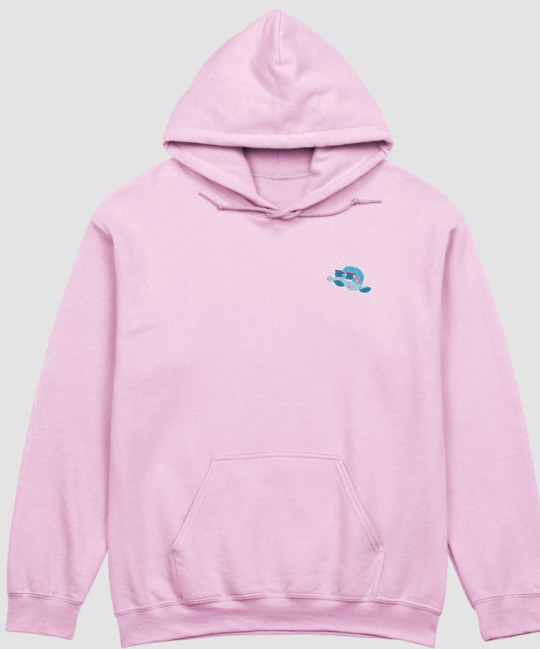

Note: these instructions are for a front-loading washing machine and natural plant fabrics like cotton. Other methods are listed here:
Supplies:
The dye (1 8-ounce jar) https://a.co/d/aR1U5tP
The activator (soda ash, get 2 1-lb bags) https://a.co/d/9di48gH
3 26-ounce containers of non-iodized salt https://www.walmart.com/ip/10448311
A 5-gallon bucket https://a.co/d/12sZoPR
Something to boil 1gal of water in (I did it in 2 batches with my kettle)
Something to stir with (I used a big serving spoon, this dye will NOT stain anything but fabric)
A washing machine, regular laundry stuff
Vinegar
How I did it:
1. Wash the clothes you want to dye normally, but don't add fabric softener.
2. While the load is finishing, put all 3 things of salt, 3 cups (700ish ml) of soda ash, and half a cup (115ish ml) of dye, in the bucket.
3. Boil 1 gallon (4ish liters) of water and pour it in the bucket (I did this by boiling 2L at a time in my kettle)
4. Stir stir stir! Dissolve it as well as you possibly can.
5. When the load is done, take the clothes out.
6. Pour the whole bucket of dye mix straight into the washing machine. I was able to tip the whole bucket into my machine, but do be careful and think ahead on how you're going do this part.
7. Put the wet clothes back in the machine. Don't add anything else like soap.
8. Start the machine, using the hottest and longest cycle possible (on my machine this is the 'whites' setting).
9. Once the cycle is finished, add your regular laundry stuff to the machine (soap, fabric softener), and fill the bleach compartment with vinegar.
10. Run the machine again on the hottest and longest cycle.
11. Tumble or hang dry. Enjoy!
13 notes
·
View notes
Text
GREENMAX Industrial Plastic Shredders for Plastic Recycling
Plastic recycling has become a cornerstone of sustainable waste management. Industrial plastic shredders play a critical role in ensuring efficient and effective recycling processes. These robust machines are designed to handle a wide range of plastic materials, converting them into small pieces and easier to recycle.

The Importance of Plastic Recycling
Environmental Benefits
Plastic pollution is a significant global challenge. Recycling plastic helps reduce landfill waste, conserve natural resources, and minimize energy consumption. By repurposing discarded plastics, industrial shredders contribute to a cleaner and greener planet.
Economic Advantages
Recycling plastic also fosters economic growth by creating jobs and reducing production costs for manufacturers. Recycled plastics serve as a cost-effective raw material for various industries, driving innovation and sustainability.

What Are Industrial Plastic Shredders?
Industrial plastic shredders are high-performance machines specifically designed to process plastic waste. These shredders, shredding plastic into smaller pieces, which can be further processed or reused in manufacturing.
youtube
Key Features of Industrial Plastic Shredders
Robust Design: Built with durable materials to handle tough plastics. Versatility: Capable of shredding a variety of plastics, including ABS, HDPE, PP, PS and more. Efficiency: Equipped with advanced technologies to ensure fast and precise shredding.
Types of Industrial Plastic Shredders
Single-Shaft Shredders
Single-shaft shredders are ideal for processing medium-to-large-sized plastic waste. These machines feature a single rotor and a hydraulic system for feeding materials efficiently.
Double-Shaft Shredders
Double-shaft shredders are designed for heavy-duty applications. They use two rotating shafts with cutting blades to shred large volumes of plastic into uniform pieces.

Applications of Industrial Plastic Shredders
Industrial plastic shredders are widely used in:
Recycling Plants: Converting plastic waste into reusable materials.
Manufacturing Facilities: Processing plastic scraps for reuse.
Municipal Waste Management: Managing plastic waste from households and businesses.
Benefits of Using Industrial Plastic Shredders
Waste Reduction: Minimize the volume of plastic waste, reducing landfill dependency.
Cost Efficiency: Decrease raw material costs by recycling plastic waste.
Energy Conservation: Lower energy requirements for producing new plastic products.
Choosing the Right Shredder
When selecting an industrial plastic shredder, consider:
Material Type: Ensure the shredder can handle the specific plastics you process.
Capacity: Choose a machine with the right throughput for your operation.
Maintenance: Opt for a shredder with easy maintenance and durable components.
Conclusion
Industrial plastic shredders are indispensable tools in the journey toward sustainable plastic recycling. By investing in the right shredder, businesses and municipalities can reduce waste, conserve resources, and promote a circular economy. These machines not only address environmental challenges but also pave the way for a more sustainable future.
1 note
·
View note
Text


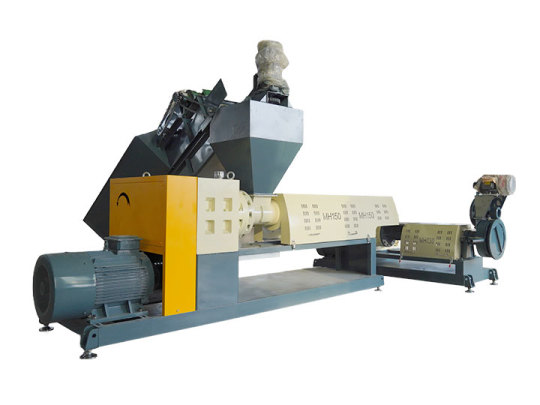
Plastic pelletizing machine is a great solution for grinding hard plastic waste into high-value recycled granules for the recycling business. It can handle PP, PE, PVC, HDPE, etc. plastics, and can be used in all sizes of plastic plants. If you're interested, please feel free to contact us.
📞WhatsApp/Tel/WeChat:+86 17303831295 🌐Our website: https://www.plasticgranularmachine.com/product/hdpe-granules-making-machine/ 📧Email: [email protected]
1 note
·
View note
Text
Plastic Scrap Grinder Machine Manufacturer, Exporter Plastic Waste Crushing Machine https://www.invoitplast.com/plastic-scrap-grinder-machine/ Each part of this plastic scrap grinder machine is made from superior material, whether it is its body or sharp blades. Plastic Scrap Grinder Machine Manufacturer, Exporter - Plastic Waste Crushing Machine are best suitable for plastic grinding or crushing of Defected and rejected plastic products from Injection Moulding Machine, Blow Moulding Machine, Extrusion lines etc i.e. Chairs, Battery boxes, HDPE Drums, PVC Pipes & Fittings, Barrels, Jerry Cans, Household products, Plastic articles, Toys etc. Invoit Plast Machinery Pvt. Ltd. is also leading exporter of Plastic Scrap Grinder Machine to South #Africa, #Dubai UAE, #Nepal, #Bangladesh and #Qatar. Invoit Plast Machinery Pvt. Ltd. located in Ahmedabad, Gujarat, India., is manufacturer and supplier of Plastic Scrap Grinder Machine and to India specifically Hyderabad, Nasik, Chennai, Baroda, Bangalore and Rajkot.
5 notes
·
View notes
Text
Exporter of LDPE Film Scrap Washing Line in Kuwait
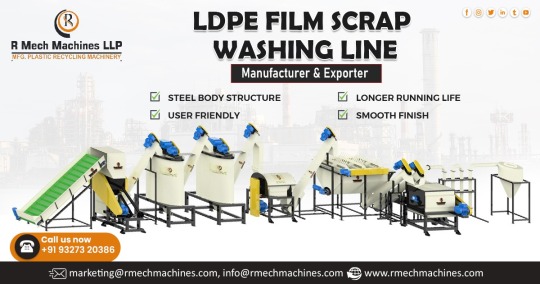
R Mech Machines LLP is an Exporter of LDPE Film Scrap Washing Line in Kuwait. R Mech Machines LLP was established in 2008 in Ahmedabad, Gujarat, India. Our offerings encompass Plastic Scrap Turbo Washing Machines, Plastic Scrap Grinder Machines, Plastic Scrap Shredder Machines, Blade Sharpening Machines, Screw Press Squeezer Machines, Friction Washer Machines etc. Overview: We designed the LDPE washing system to clean contaminated film or thin materials. We design the grinding machine to create standardized particle sizes that are easy to wash and dry for film or thin materials. The high-speed turning of the rotor produces centrifugal force, which we utilize to remove dirt and sand from the washer. We use floating materials such as LDPE/HDPE/PP film/labels on the top and sink materials like PVC/PET/PC on the bottom. Both have separate discharge points to collect different materials based on density. Horizontal dryers and thermal drying systems control the moisture content of the finished product. At a moisture level of less than 5%, the material is appropriate for high-quality pelletizing. Features: Steel body structure User friendly Longer running life Smooth finish R Mech Machines LLP is an Exporter of LDPE Film Scrap Washing Line in Kuwait and places like Kuwait City, Mahboula, Ahmadi, Salmiya, Jabriya, Hawally, Zour, Sabah Al Salem, Al Farwaniyah. If you have any questions or need more information, feel free to reach out to us. Read the full article
#Ahmadi#Ahmedabad#AlFarwaniyah#BladeSharpeningMachines#cleancontaminatedfilm.dryingsystems#createstandardized#Exporter#ExporterofLDPEFilmScrapWashingLine#ExporterofLDPEFilmScrapWashingLineinKuwait#FrictionWasherMachines#Gujarat#Hawally#high-qualitypelletizing#high-speedturning#Horizontaldryers#India#Jabriya#Kuwait#KuwaitCity#LDPEFilmScrapWashingLine#LDPEFilmScrapWashingLineinKuwait#Longerrunninglife#Mahboula#Manufacturer#PlasticScrapGrinderMachines#PlasticScrapShredderMachines#PlasticScrapTurboWashingMachines#SabahAlSalem#Salmiya#ScrewPressSqueezerMachines
2 notes
·
View notes
Text
Know About The Potential of Plastic Extrusion Process
A manufacturing technique called plastic extrusion is used to make products with a predetermined cross-sectional profile. To form molten plastic into a continuous profile that can be cut to specified lengths, it is pushed through a die. Numerous items may be produced with this technique, ranging from straightforward pipes and tubes to intricate profiles utilized in packaging, automotive, construction, and other industries.

Flexibility in Utilization
Building: Plastic extrusion plays a key role in the building sector by creating pipes, profiles, and other parts that go into drainage systems, windows, doors, roofing, and plumbing. For example, extrusion is frequently used in the manufacturing of PVC and HDPE pipes because of its robustness and resistance to corrosion.
Consumer Products: The production of toys, furniture, and home appliances has benefited from the usage of the Plastic Extrusion Process. Custom profiles and complex designs may be produced with this technology, meeting the practical and aesthetic needs of many items.
Medical: Tubing, catheters, and other medical equipment are produced in the medical industry via plastic extrusion. The capacity to produce accurate, sterile parts guarantees adherence to strict legal requirements while satisfying the needs of medical practitioners and patients.
Benefits of Plastic Extrusion:
Cost-Effectiveness: Plastic extrusion provides affordable options for producing a variety of goods. Compared to alternative approaches, the process lowers material waste and needs less expensive tooling, making it a financially feasible option for large-scale manufacturing.
Design Flexibility: Manufacturers may design unique profiles and forms using plastic extrusion to satisfy certain specifications. In markets with intense competition, this flexibility promotes innovation and product differentiation.
Efficiency: The production of consistent profiles in continuous lengths with little downtime is possible through the very efficient process of plastic extrusion. This efficacy adds to overall operational effectiveness by translating into increased production and quicker turnaround times.

Material Versatility: PVC, HDPE, LDPE, PP, and ABS are just a few of the thermoplastic materials that may be used with plastic extrusion. Because of its adaptability, plastic extrusion manufacturer may choose the material that best suits their needs by weighing characteristics like strength, flexibility, and chemical resistance.
2 notes
·
View notes